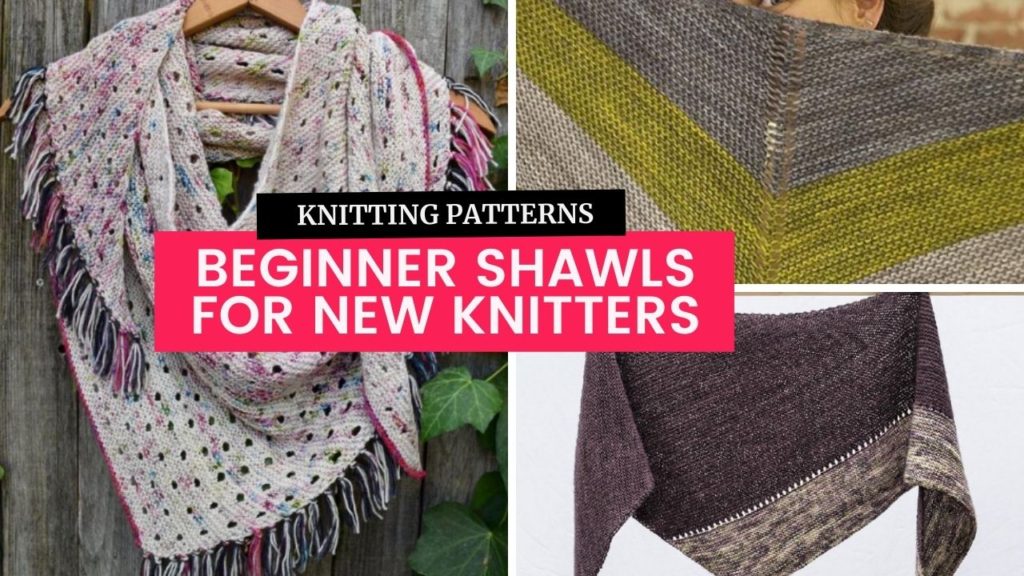If you’re a new knitter and ready to try a few new projects, give these beginner shawl knitting patterns a try. All of these shawls are worked in Garter stitch (knit every row) so you can focus on the instructions to create the various shawl shapes (by using a variety of increase techniques).
Here’s a quick list of the shawls in this article (perfect for new knitters):
- Grain from Tin Can Knits
- Boom! from Plays with Fibre
- Meridian from Jumper Cables
- One Skein Wonder by Amanda Kremer
- I Smell Snow by Melody Hoffman
- Garnet Eyelets by Kelene Kinnersly
- Drop the Fringe from All Knit Up
- Stormy Day’s from Cat is Crafty
- Bielha by Joanna Ignatius
- Promise of Spring from Hand Knit by Kam
- Happy Scrappy Shawl from All Knit Up
- Sarabnade by Leah Prestamo
Now, let’s take a closer look at each of these beginner shawl patterns (you’ll find links to all the patterns as well as some yarn recommendations).
The links below include affiliate links. If you click through and make a purchase, I may receive a small commission at no extra cost to you. See the disclosure policy for more information.
Grain
Grain is a top-down triangle shawl that’s versatile and beginner-friendly. It includes full tutorials for new knitters that will help them knit their shawl. This pattern also includes information for knitting the pattern using three different weights of yarn (fingering, DK, and worsted/aran) so you’ll be able to knit a lightweight shawl or a heavier, warmer shawl.
Get the pattern: Grain
Get the yarn: Cascade 220
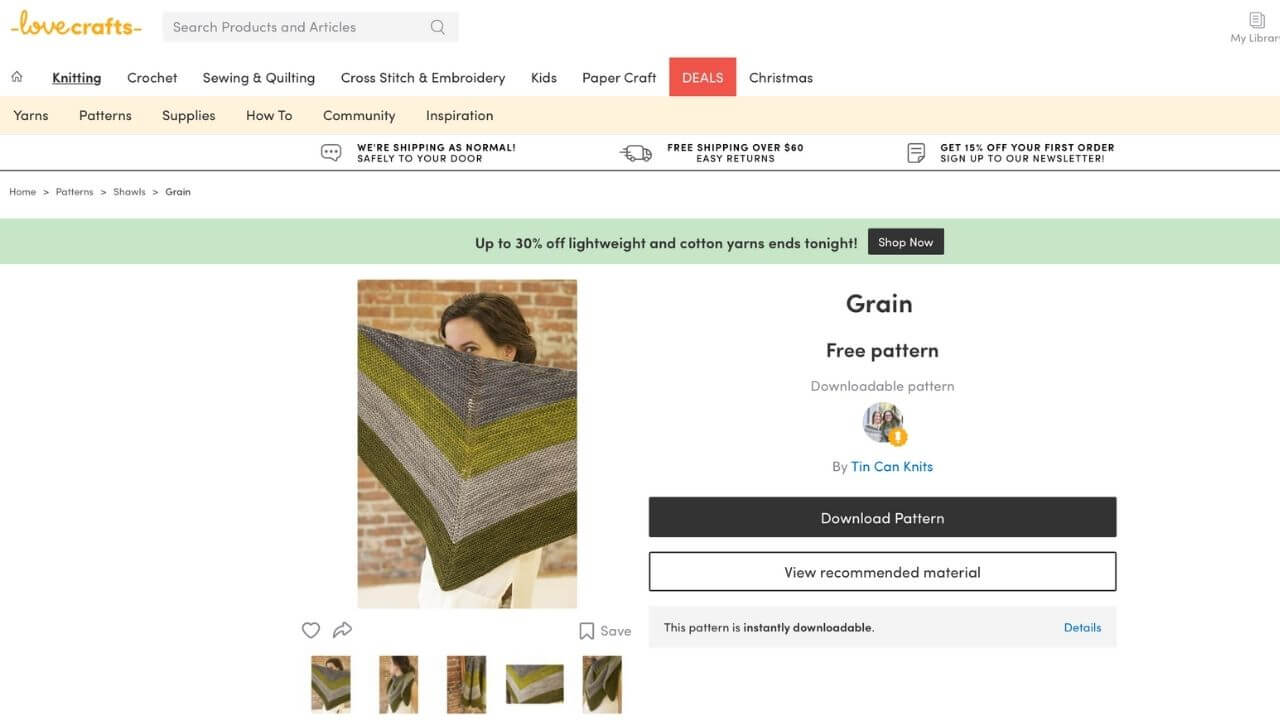
Boom!
Boom! is a simple asymmetrical boomerang shawl that shows off those gradient or variegated yarns. The pattern also includes instructions for working with different yarn weights so you can create a customized size.
Get the pattern: Boom!
Get the yarn: Cascade 220
Meridian
Meridian is also an asymmetrical design that would look beautiful with its combination of solid and multicoloured fingering weight yarns. It’s worked on the bias and features eyelets for a small decorative detail. The pattern is easily adjustable – just keep knitting to create a larger shawl.
Get the pattern: Meridian
Get the yarn: Cascade Heritage

One Skein Wonder
This pattern is also knit on the bias and it’s recommended that you choose a variegated yarn to play with color. It’s worked from corner to edge, using increases on every row and small sections of bound-off stitches to create the shape.
Get the pattern: One Skein Wonder
Get the yarn: Koigu Kersti
I Smell Snow
I Smell Snow is a play on the classic Shetland Hap shawls. Instead of the traditional lace border often found in Hap shawls, the designer uses Garter stitch and with decorative eyelets throughout. The design also includes the option of adding some mini tassels as well.
Get the pattern: I Smell Snow
Get the yarn: Madelinetosh Twist Light
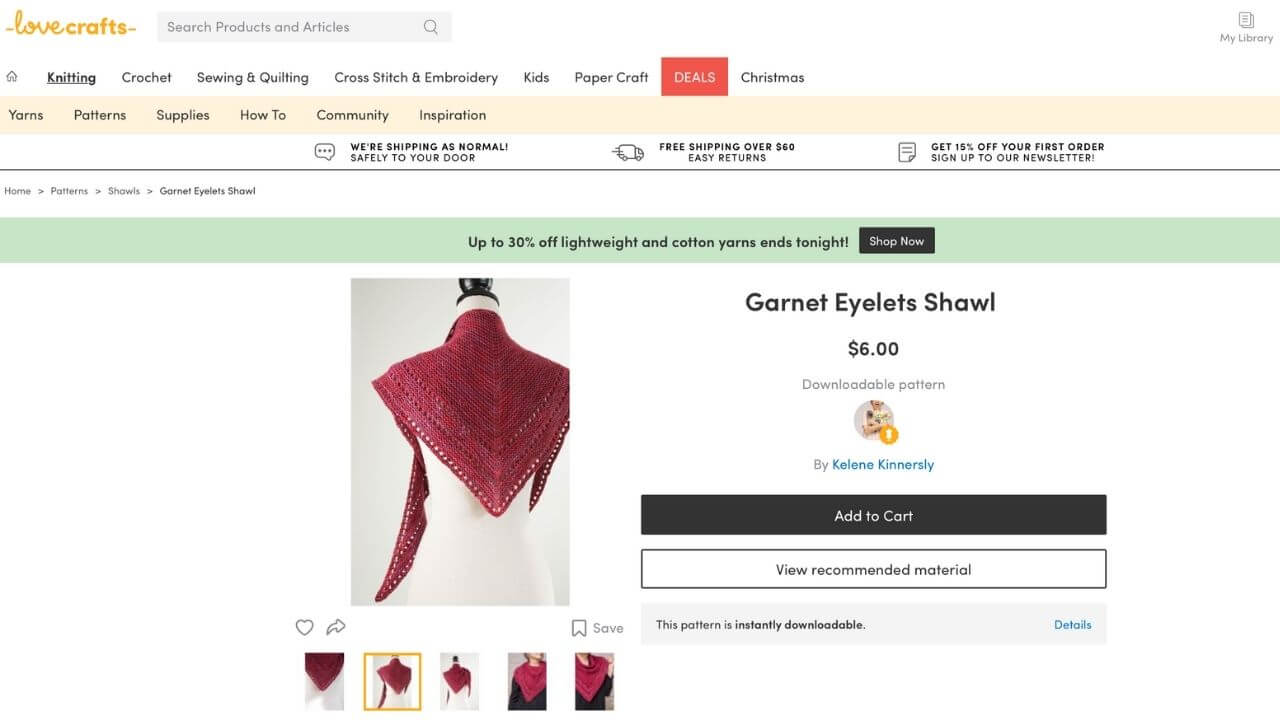
Garnet Eyelets
The Garnet Eyelets shawl is knit in worsted weight yarn and is worked top-down to create a heart-shaped triangle shawl with eyelet rows adding a pretty touch. A lovely hand-dyed yarn would make a beautiful shawl.
Get the pattern: Garnet Eyelets
Get the yarn: Madelinetosh Tosh Vintage
Drop the Fringe
Drop the Fringe is a fun, easy to knit shawl. It consists of an eight-row repeat and, by using two skeins of a solid or hand-dyed yarn and two 10 gram mini skeins you can create a fun shawl. The colorful fringe and decorative eyelets add a bit of interest to the Garter stitch design.
Get the pattern: Drop the Fringe
Get the yarn: Madelinetosh Twist Light

Stormy Days
Using a bulky yarn, this shawl will work up fairly quickly and, using a gradient yarn would make a pretty shawl. The shape is a play on an asymmetrical design with a zig-zag edge.
Get the pattern: Stormy Days
Get the yarn: Malabrigo Mecha
Discover the Confidence You Need to Fix Your Knitting Mistakes
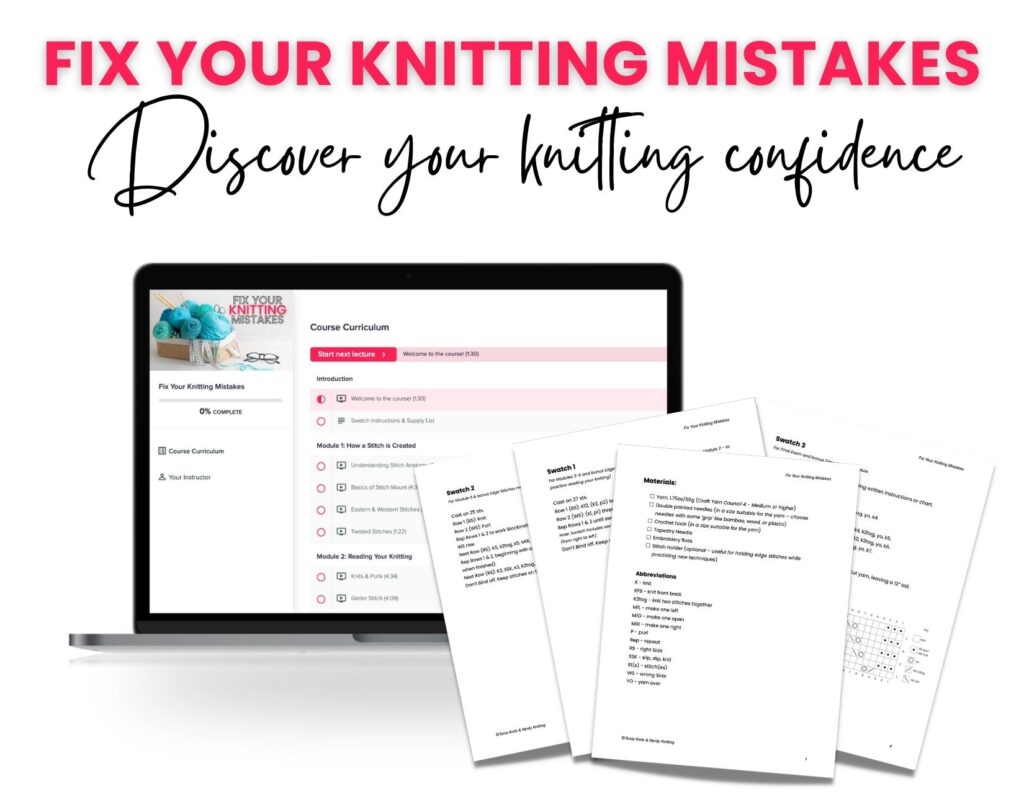
By the end of this six-part self-paced course, you’ll be able to read your knitting, recognize a variety of knitting mistakes, and understand how to fix them.
Bielha
Bielha is a crescent-shaped shawl, worked from the top down. Two yarns are held together for this design – a strand of kid silk along with a strand of lighter sport or lace weight yarn. You can also stretch our new knitting skills just a bit with the picot bind-off.
Get the pattern: Bielha
Get the yarn: MillaMia Naturally Soft Merino and Rowan Kidsilk Haze
Promise of Spring
Promise of Spring is a triangle shawl, but instead of the usual top-down construction, this one is worked from tip to tip with a simple lace edging across one side. Using two contrasting colors will produce a beautiful finished shawl as you begin with one yarn, work the middle of the shawl with both colors before finishing the final side with the second color.
Get the pattern: Promise of Spring
Get the yarn: Cascade Heritage
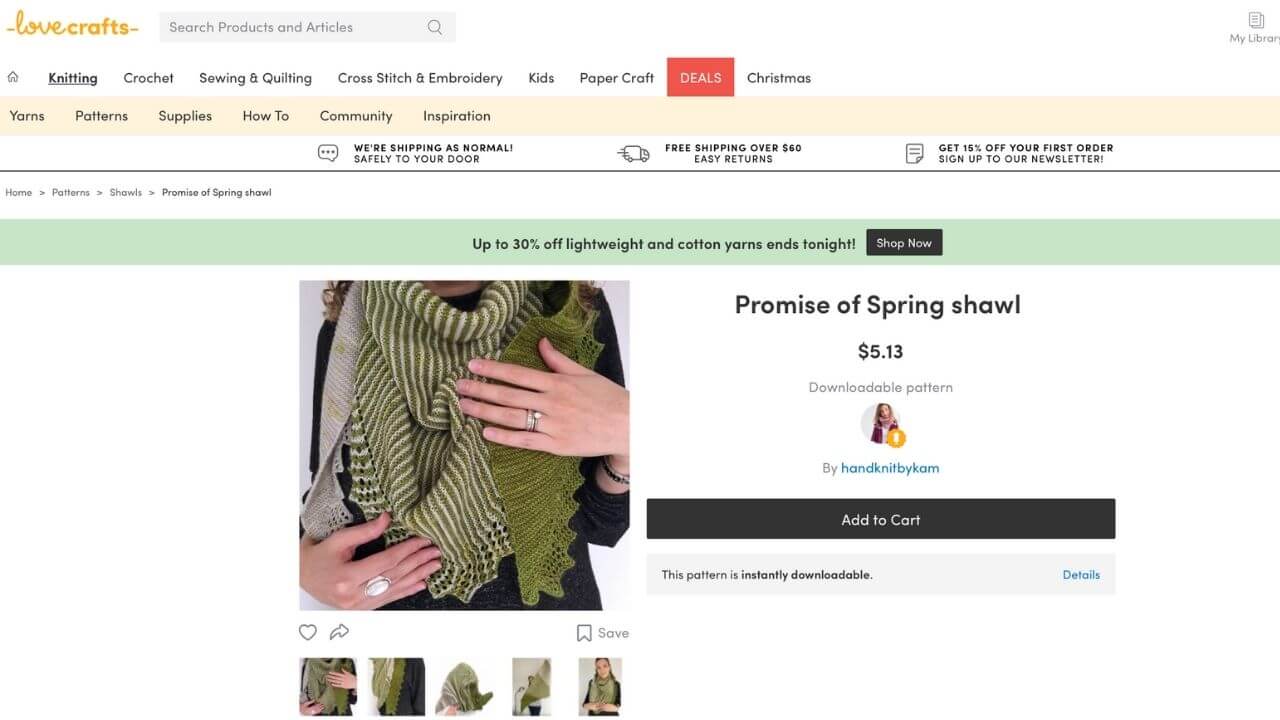
Happy Scrappy Shawl
The colourful Happy Scrappy Shawl is just as the name suggests – a project that uses up all those scraps of yarn. But, of course, if you don’t have enough scrap yarns on hand, you can use two contrasting colors of fingering weight yarn to create the same design (but I’m partial to the scrappy nature of this shawl – it’s a great way to use up those bits of yarn). Best of all, instead of weaving in the ends, they can be used as fringe along each edge.
Get the pattern: Happy Scrappy Shawl
Get the yarn: Koigu Painters Palette Premium Merino
Sarabande Shawl
The designer created this shawl with the specific intention of helping some friends start their own knitting journey. With this beginner-level shawl pattern, you’ll learn simple increases and decreases and how to make color changes. And, instead of the usual triangle and asymmetrical shapes, this is a rectangular shape with bands of contrasting color (using simple Intarsia) and eyelets.
Get the pattern: Sarabande Shawl
Get the yarn: Cascade 220 Superwash Merino
More Shawl Knitting Tips
If you’re looking for a few more shawl knitting tips, here you go! These are common questions that knitters often ask about knitting shawls.
Can you knit a shawl on straight needles?
You can knit a shawl on straight needles. Many shawls are knit flat, back-and-forth in rows, so a long set of straight needles would be a fine option for knitting. If it’s a heavy shawl (using thicker yarn), it might be easier to use a long circular needle so the cable can hold the bulk of the weight of the shawl.
How much yarn do I need to knit a shawl?
The table below provides an estimate for how much yarn is needed, based on the weight (the thickness) of the yarn. Shawls knit with lightweight, fine yarns will require more yardage to knit a shawl, while thicker, bulkier yarns will require less yardage. The finished measurements of the shawl will also require different amounts of yarn – a small shawlette will require less yarn while a large wrap will require more yarn.
| Yarn Weight | Yardage Requirements |
| 0 – Lace | 550-850 yards |
| 1 – Super Fine | 450-750 yards |
| 2 – Fine | 400-700 yards |
| 3 – Light | 400-650 yards |
| 4 – Medium | 375-600 yards |
| 5 – Bulky | 350-500 yards |
| 6 – Super Bulky | 300-475 yards |
How do you knit a crescent shawl?
There are two methods for creating a crescent shawl shape. You can use short rows to create the shape – casting on a large amount of stitches for the top edge of the shawl, then using decreasing short rows (working fewer stitches than the row before) to shape the shawl.
The second option is to begin with a small number of stitches and increasing at the beginning and end of every row (both right-side and wrong-side rows) to create the shape. On right-side rows, you need to increase by four stitches (a common method is to k-yo-k into one stitch at the beginning and end of the row). On the wrong-side rows, increase by two stitches (work a yarn over at the beginning and end of the row).
How do you knit a triangle shawl?
To knit a top-down triangle shawl, start with a small amount of stitches – a few stitches for each edge, one stitch for each of the two smaller triangles, and one spine stitch. Place four markers to divide all these sections. To create the shape, you need to increase by four stitches on every right-side row.
Follow this basic instruction for all right-side row: Knit the edge stitches, slip marker, increase (a yarn over or other increase), knit the body stitches, increase, slip marker, knit the spine stitch, slip marker, increase, knit the body stitches, increase, slip marker, knit the edge stitches. On the wrong-side rows, you can knit (for a Garter stitch shawl) or purl (for a Stockinette stitch shawl).
More Projects for New Knitters
- Easy Dishcloth Patterns for New Knitters
- Beginner Scarf Knitting Pattern
- Simple Fingerless Mitts for Beginners
